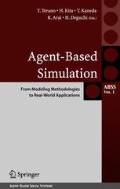Summary
The following research investigates communication among workers for AIDS-related non-governmental organizations (NGOs) in Hong Kong. The study seeks to learn to what extent full-time and part-time workers for those NGOs applying to the AIDS Trust Fund (ATF) discuss their prevention or treatment programs with their colleagues, and relates this exchange of information to the strategies that the NGOs use to fund and implement their programs. Ethnographic fieldwork contextualizes network models of communication and division of labor derived from quantitative questionnaires with a multidimensional scaling algorithm. Qualitative and quantitative evidence suggests that competition for funding and a cultural preference for hierarchy in Hong Kong discourage the sharing of ideas. Information exchange occurs primarily through strong ties within and between offices, and the Hong Kong Coalition of AIDS Service Organizations (HKCASO) emerges as the chief mechanism for sharing HIV/AIDS prevention strategies among the NGOs in Hong Kong.
Access this chapter
Tax calculation will be finalised at checkout
Purchases are for personal use only
Preview
Unable to display preview. Download preview PDF.
References
Berkowitz, S D (1982) An Introduction to Structural Analysis: The Network Approach to Social Research. Toronto: Butterworth & Co.
Bian, Y (1997) “Bringing Strong Ties Back In: Indirect Ties, Network Bridges, and Job Searches in China.” American Sociological Review: 62(3): 366–385
Burt, R (1992) Structural Holes: The Social Structure of Competition. Cambridge: Harvard University Press
— (1998) “Project Questionnaire for Graduate School of Business Alumnae Survey: Contacts, Career, and Family.” Electronic Document. Retrieved July 2002 from http://gsbwww.uchicago.edu/fac/ronald.burt/research/GSBASl.pdf
Callahan, R (2003) Modeling the Exchange of AIDS Prevention and Treatment Strategies in Hong Kong. Dissertation, Mathematical Social Sciences, Dartmouth College
Granovetter, M (1973) “The Strength of Weak Ties.” American Journal of Sociology 73(6):1360–1380
Joslyn, C (1999) “Semiotic Agent Models for Simulating Socio-Technical Organizations.” Prepared for the DS Project, PSL/NMSU. Electronic Document. Retrieved April 2004 from http://www.c3lanl.gov/~joslyn/nmsu/semagentp.pdf
Klein, A (1998) Textual Analysis Without coding: It Can be Done. Dissertation, Mathematical Social Sciences, Dartmouth College
Laumann, E O, Marsden P V, Prensky D (1989) “The Boundary Specification Problem in Network Analysis,” in Freeman, L C, White, D R, and Romney, A K (Eds) Research Methods in Social Network Analysis. Fairfax, VA: George Mason University Press
Levine, J, Klein, A, Mathews, J (2001) “Data Without (Operational) Variables.” Journal of Mathematical Sociology 25(3): 225–273
Marsden, P V (1982) “Brokerage Behavior in Restricted Exchange Networks,” in Marsden, P V and Lin, N (Eds) Social Structure and Network Analysis. Beverly Hills: Sage Publications
Nelder, JA and Mead, R (1965) “A Simplex Method for Function Minimization.” The Computer Journal 7(4): 308–313
Press, W H, Teukolsky, S A, Vetterling, W T, Flannery, B P (1992) Numerical Recipes in Fortran 77: The Art of Scientific Computing. 2nd edition. Cambridge: Cambridge University Press
White, H, Boorman, S, Breiger, R (1976) “Social Structure from Multiple Networks, I: Blockmodels of Roles and Positions.” American Journal of Sociology 81 (1976): 730–780
Author information
Authors and Affiliations
Editor information
Editors and Affiliations
Rights and permissions
Copyright information
© 2005 Springer-Verlag Tokyo
About this paper
Cite this paper
Callahan, R.J. (2005). Modeling the Exchange of AIDS Prevention and Treatment Strategies in Hong Kong. In: Terano, T., Kita, H., Kaneda, T., Arai, K., Deguchi, H. (eds) Agent-Based Simulation: From Modeling Methodologies to Real-World Applications. Agent-Based Social Systems, vol 1. Springer, Tokyo. https://doi.org/10.1007/4-431-26925-8_3
Download citation
DOI: https://doi.org/10.1007/4-431-26925-8_3
Publisher Name: Springer, Tokyo
Print ISBN: 978-4-431-26592-4
Online ISBN: 978-4-431-26925-0
eBook Packages: Business and EconomicsEconomics and Finance (R0)

